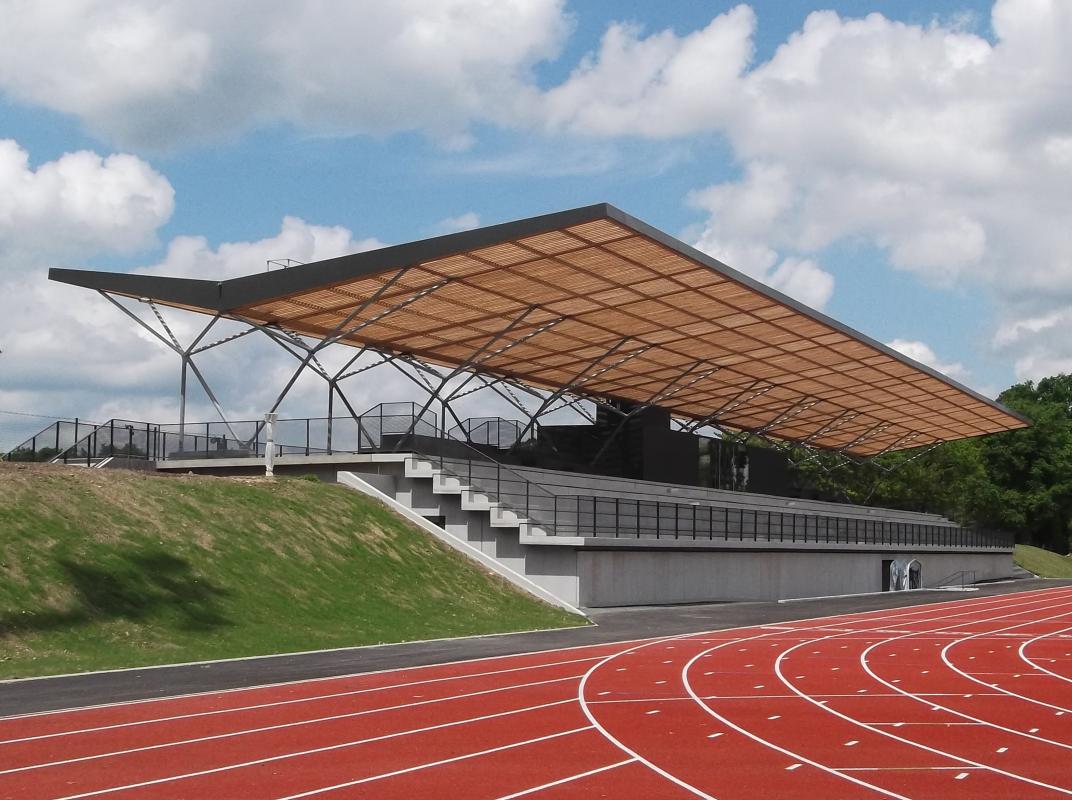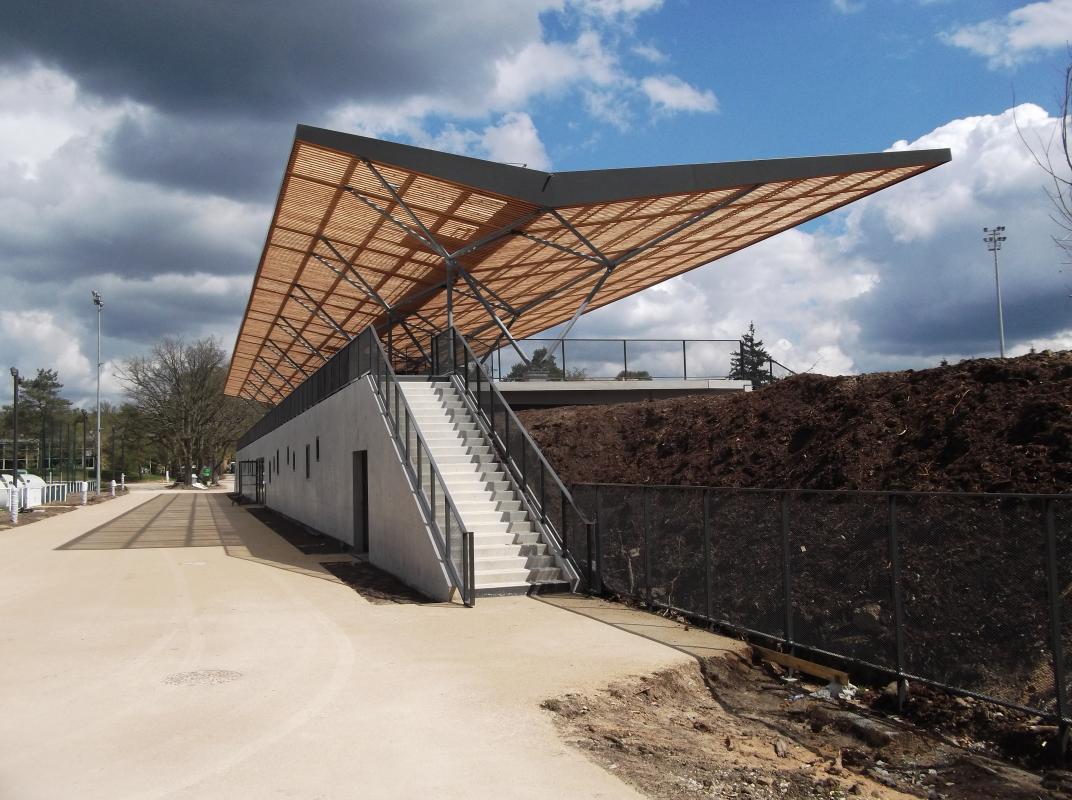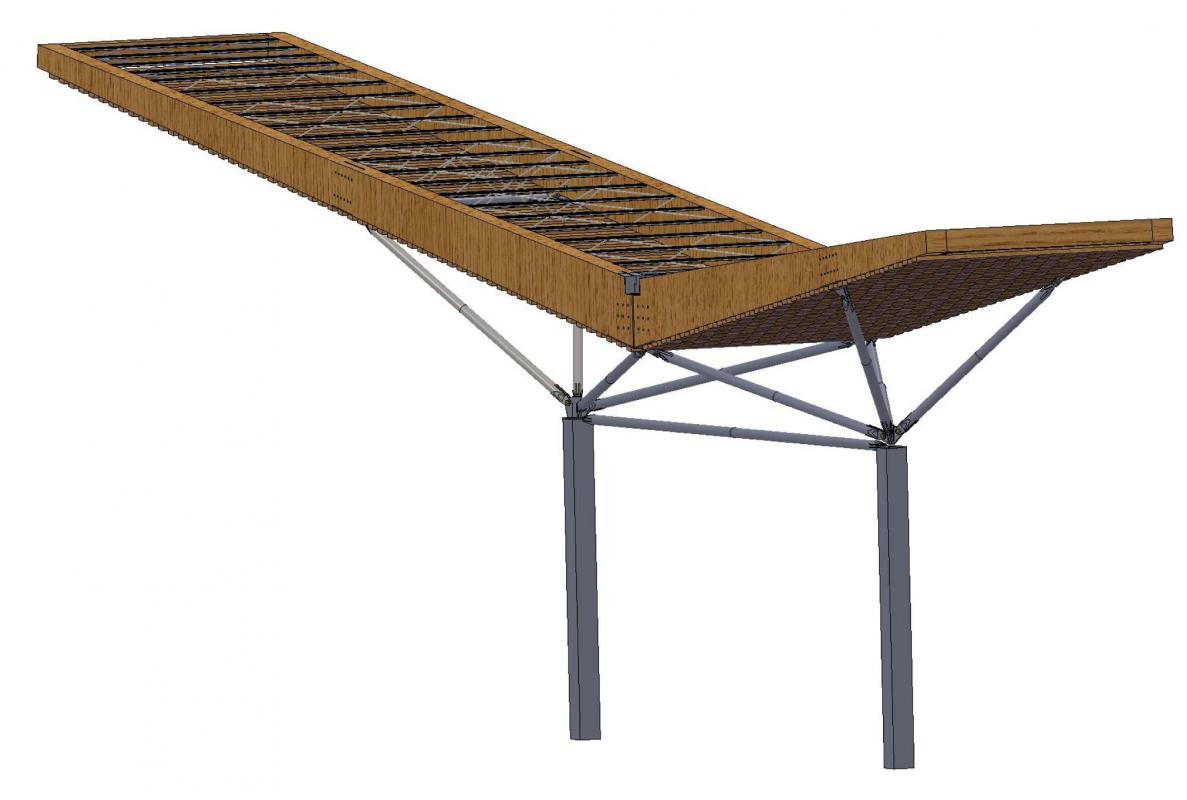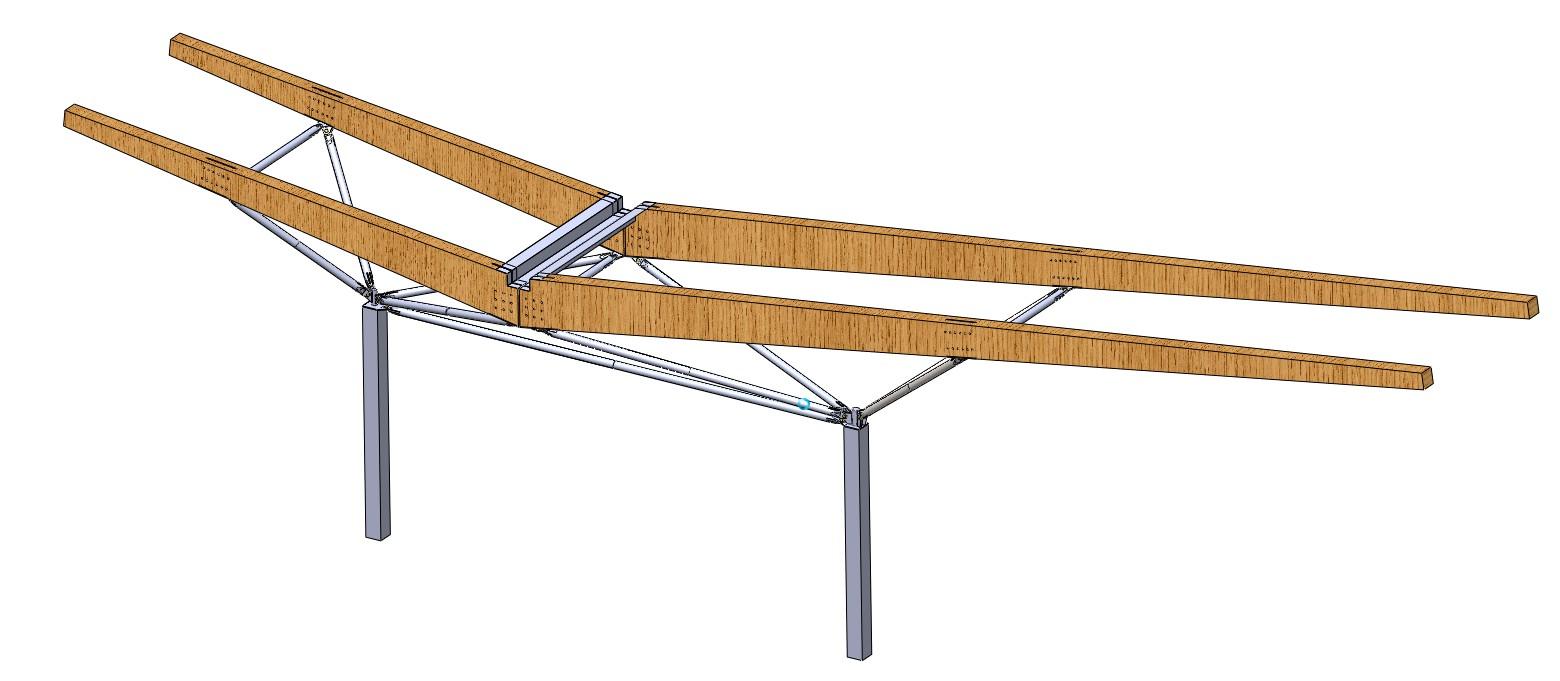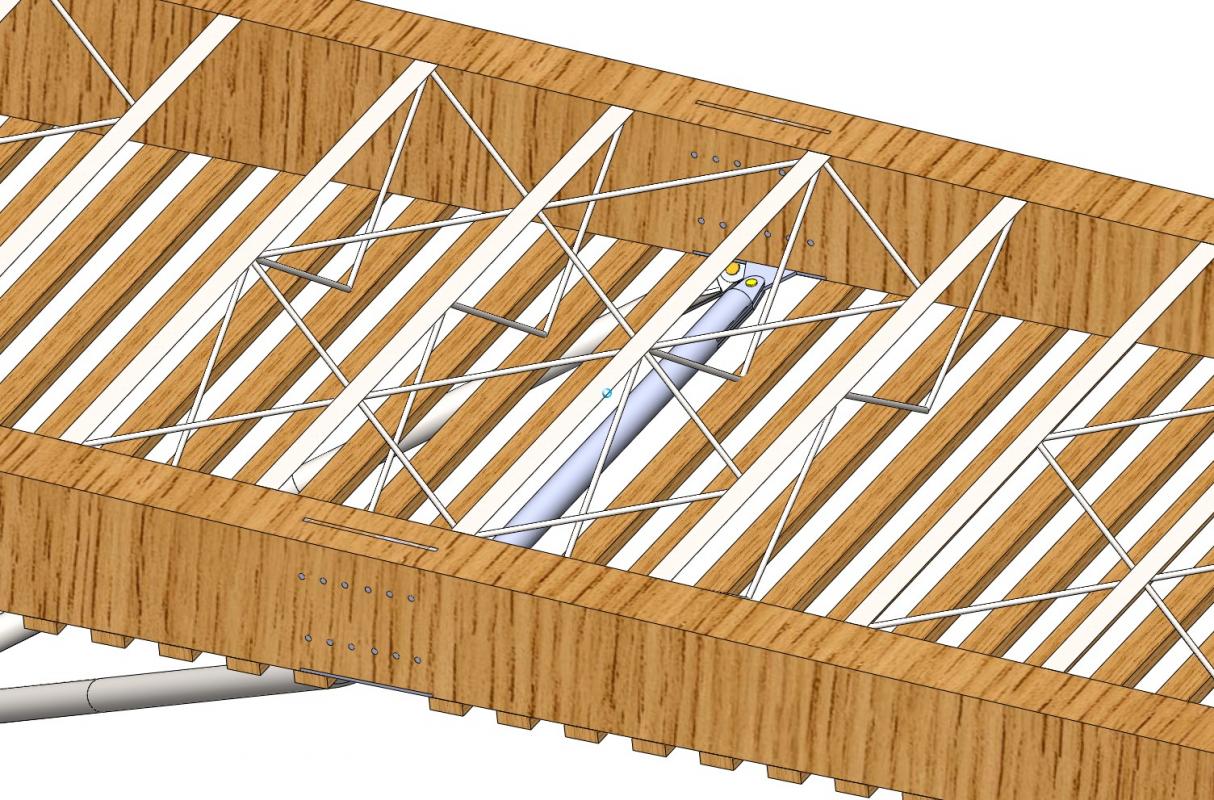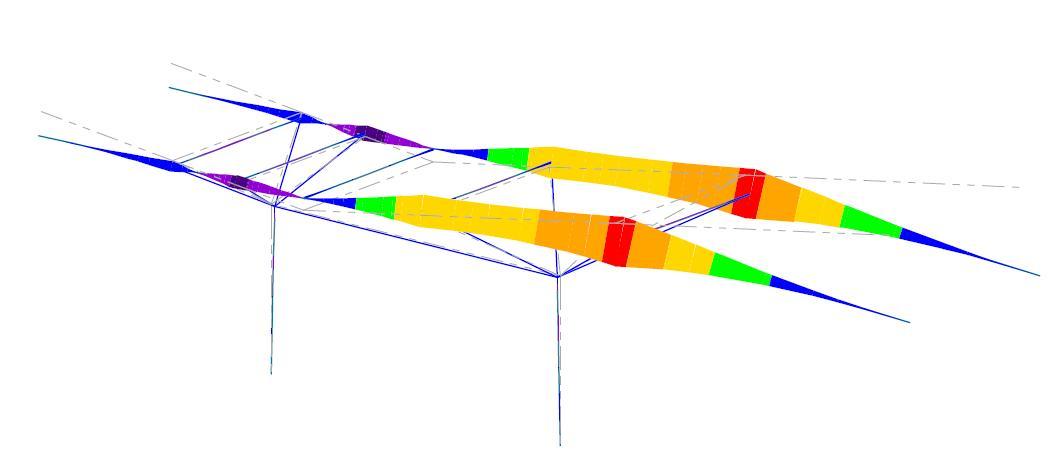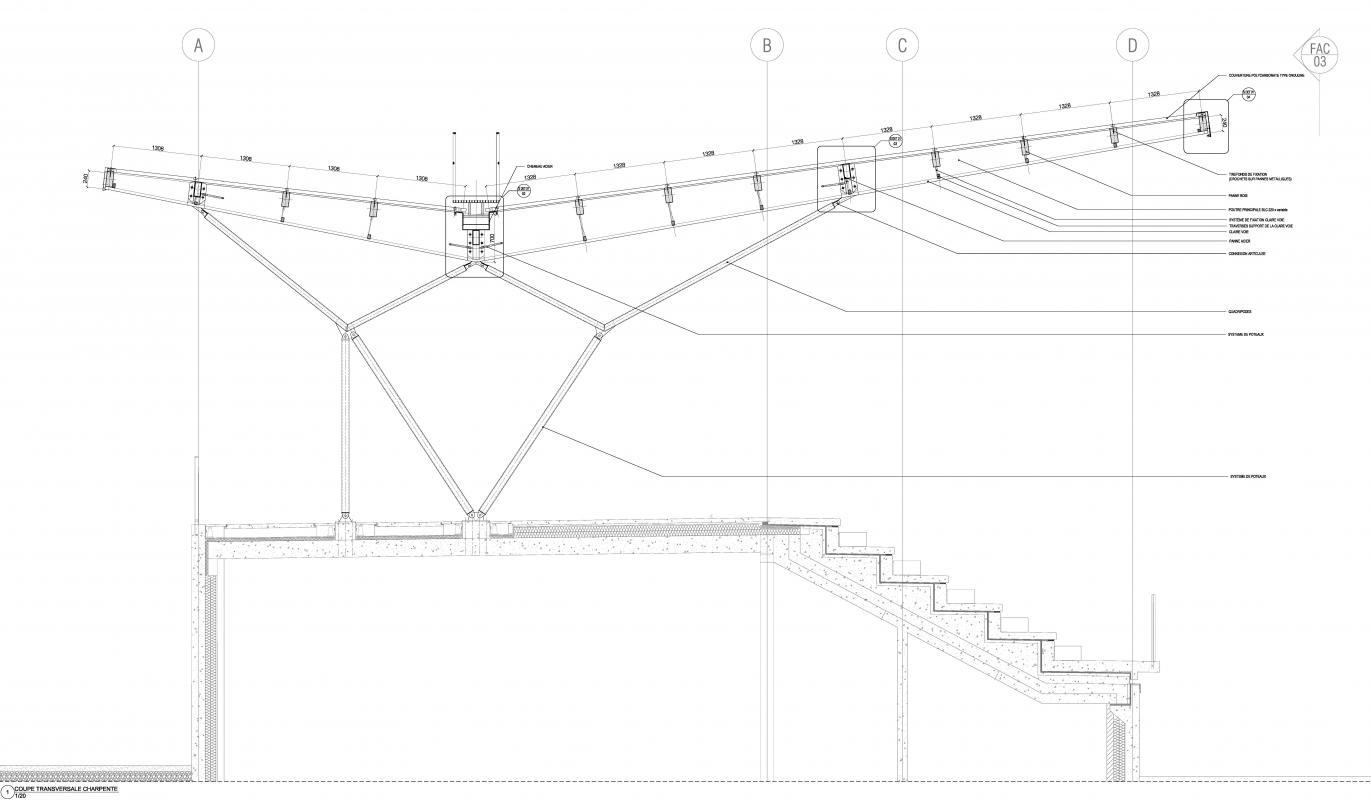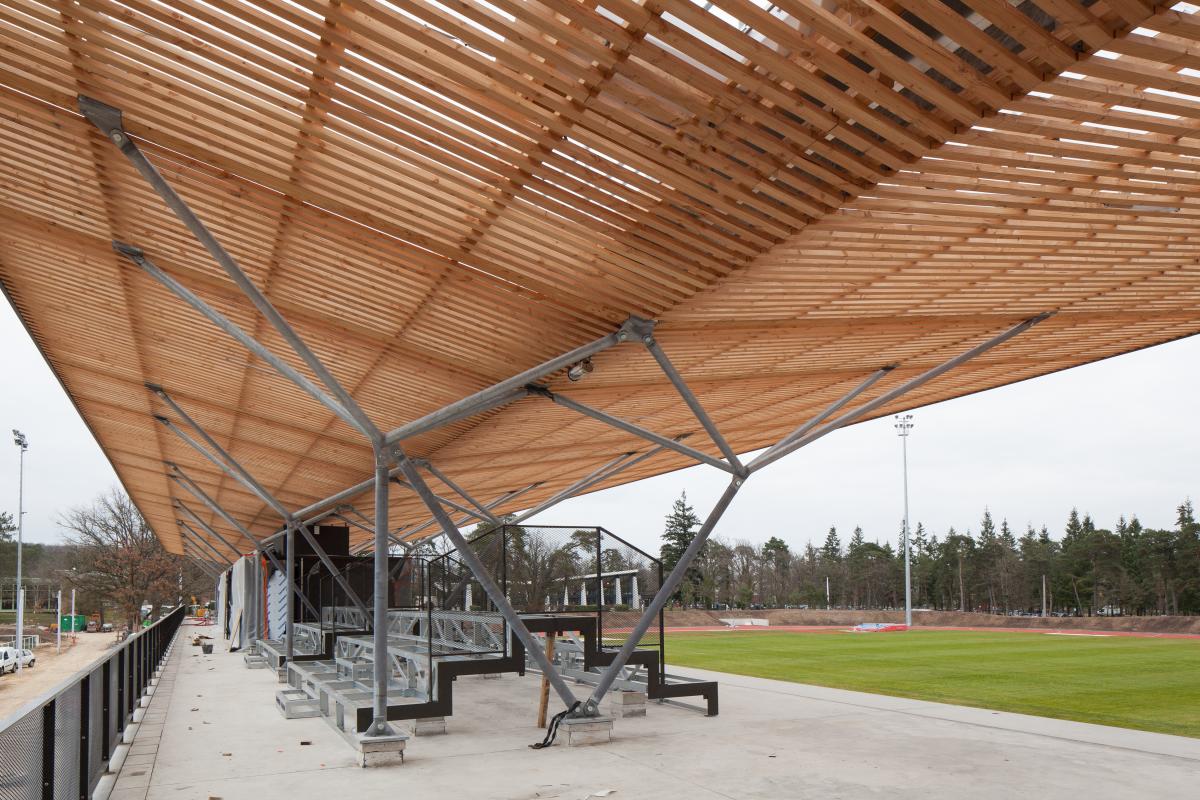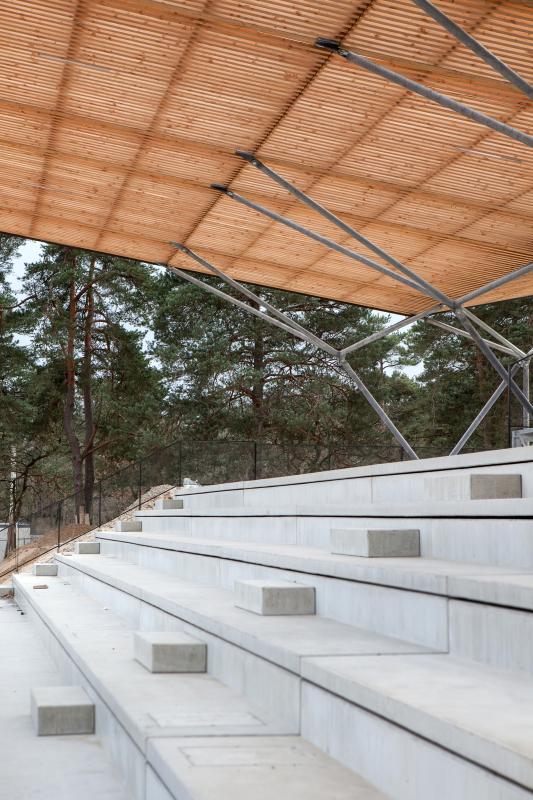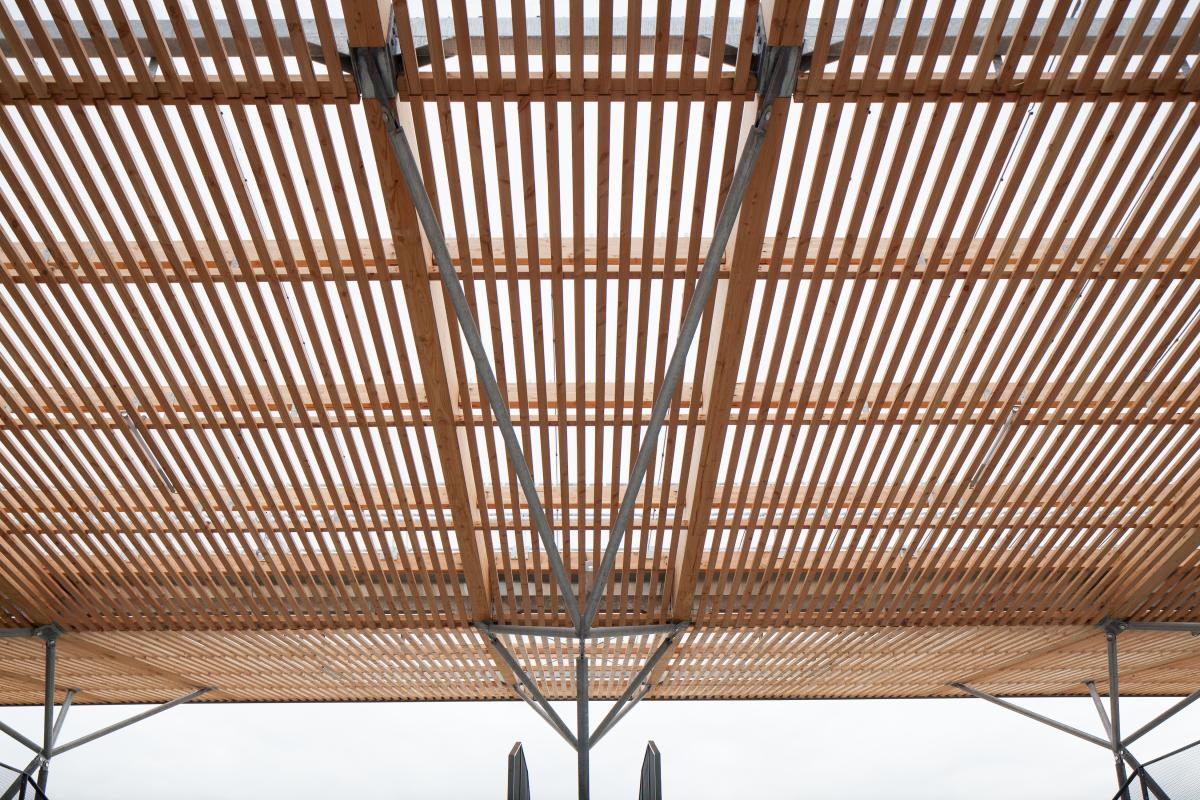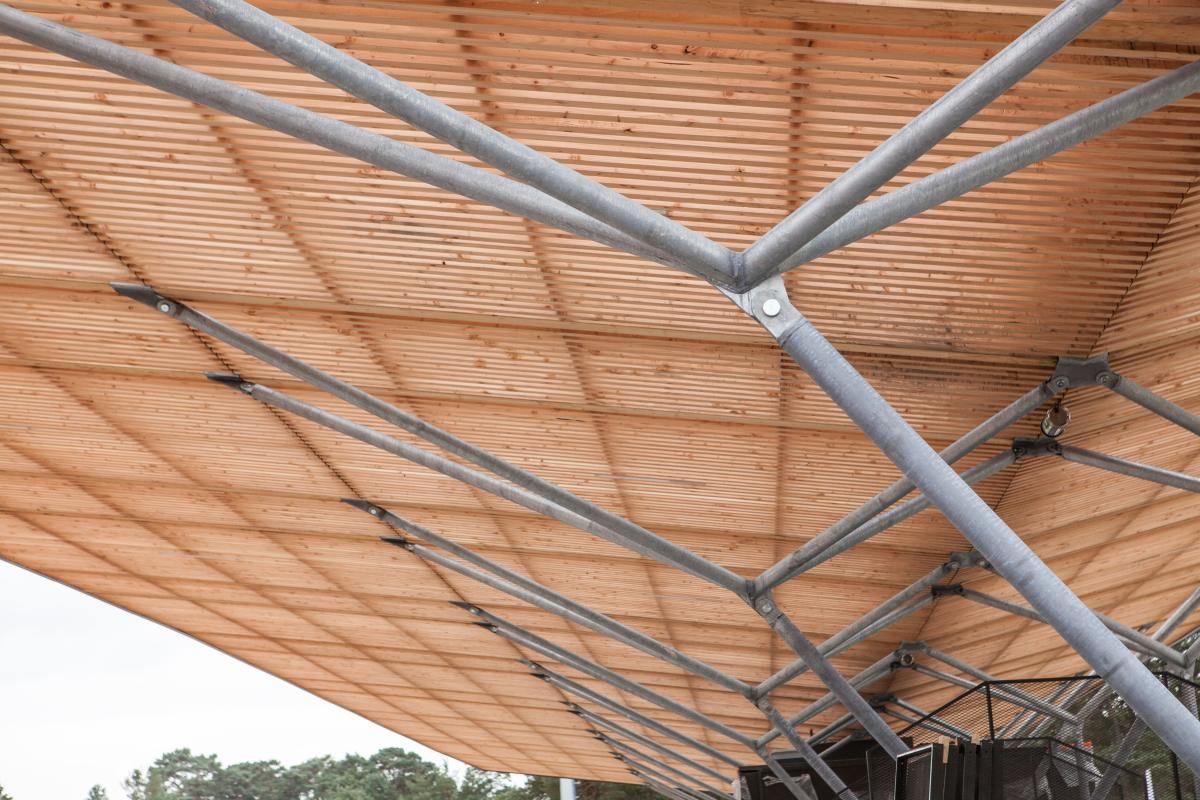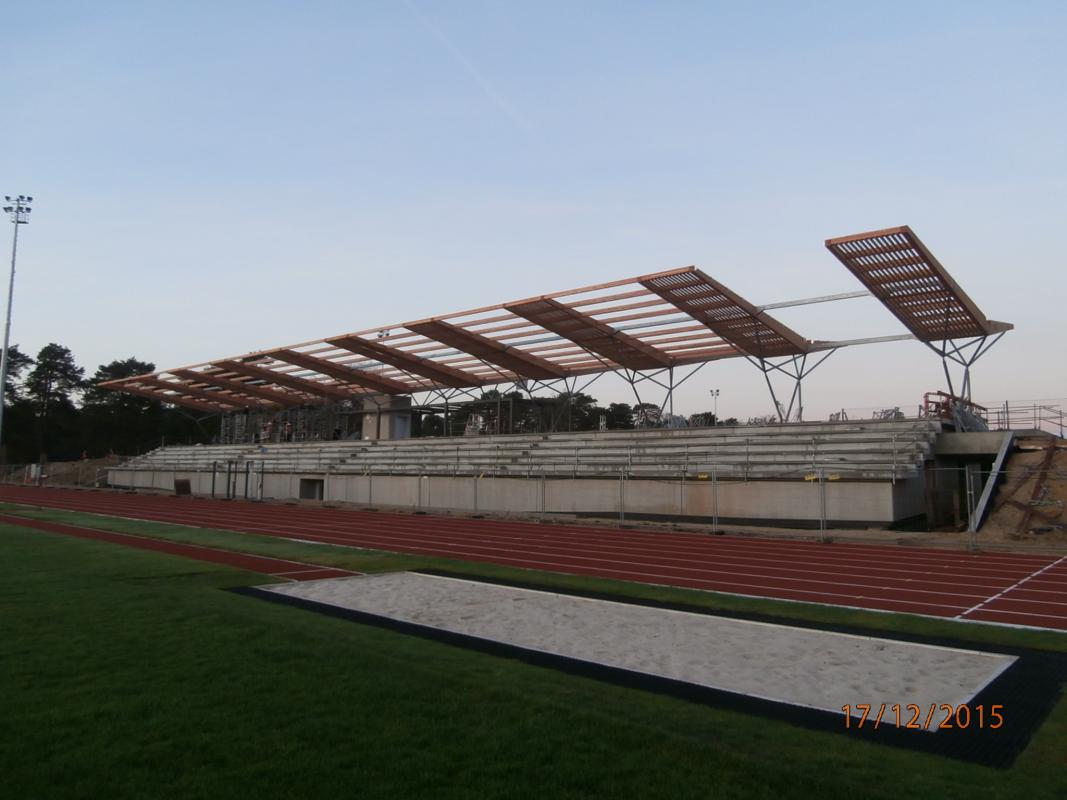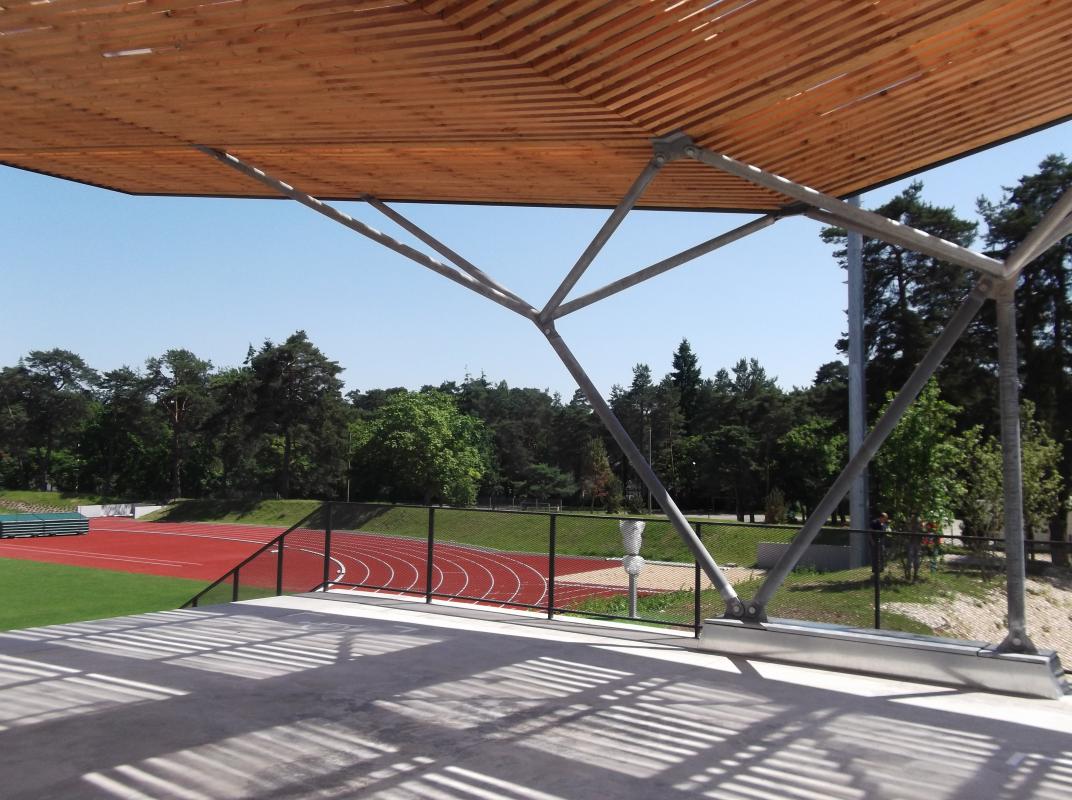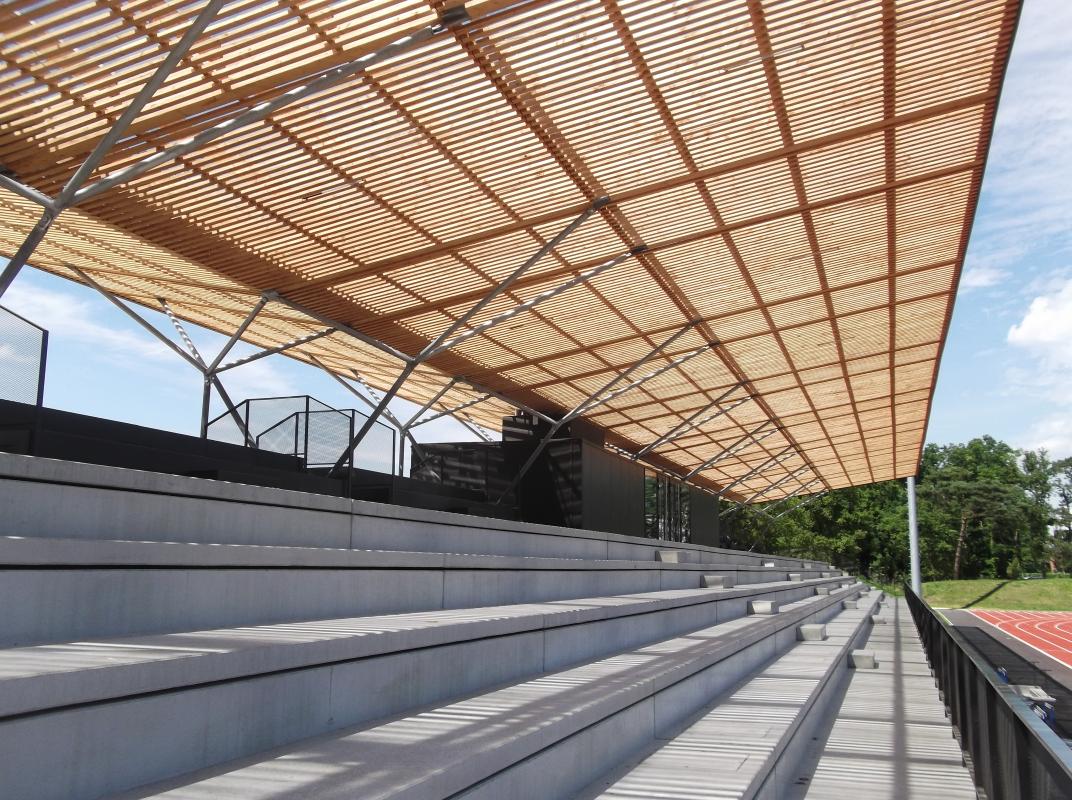Faisanderie sports centre
Location :
Fontainebleau
Architect :
Barthélémy-Griño
Client :
Communauté de Communes des Pays de Fontainebleau (CCPF)
Package :
Main structure, framework, roofing
Scope :
Complete technical design and construction monitoring
Date :
2009–2016
Collaborators :
Boyer (Main structure), Cruard Charpente (structure), Cruard Couverture (roof)
Redevelopment of the sports complex
In 2008, the Fontainebleau local authority launched a competition to redevelop the Faisanderie sports grounds, situated on the edge of the forest of Fontainebleau. This redevelopment includes landscaping and the rebuilding of the stands that existed between the two main sports grounds. The new grandstand, 75m long, would be inserted between two planted mounds. The awning that shelters the seating would be the only structure to rise from the site.
The base of the grandstand is made up of five lines of terraced seating facing the main football pitch, and a rear terrace that looks out over the second sports ground.
Beneath the seating and terrace, the ground floor level incorporates changing rooms, washrooms and storage. This base is made of reinforced concrete left untreated to the exterior, painted or lined inside. The presence of heated and wet rooms underneath the terraced seating required particular solutions to ensure water-tightness and thermal insulation, taking into consideration the weight of spectators overhead. At the centre of the terrace, a partially glazed pavilion accommodates the stairs and lift lobby.
An awning covers the whole of the terrace and the terraced seating. The roof has two slopes converging toward a valley with a central gutter along its entire length. The roof is supported by a system of spreading ‘tree-like’ columns placed every 17m. These comprise three posts, which, above a height of 3m, branch into painted steel tubular bi-articulated links. Each post system is triangulated to give transversal strength, and each gives six points of support to the roof.
The roof’s structure is in Douglas fir. It is composed of pairs of glulam beams of variable section, linked by thirteen lines of purlins. Longitudinal bracing is provided by the central pavilion. The awning is covered by sheets of corrugated polycarbonate.
Beneath this cover is a screen made of a dense grid of thick planks of Douglas fir. The screen filters direct sunlight and creates a play of light and reflections on the wood, highlighting the roof line.

